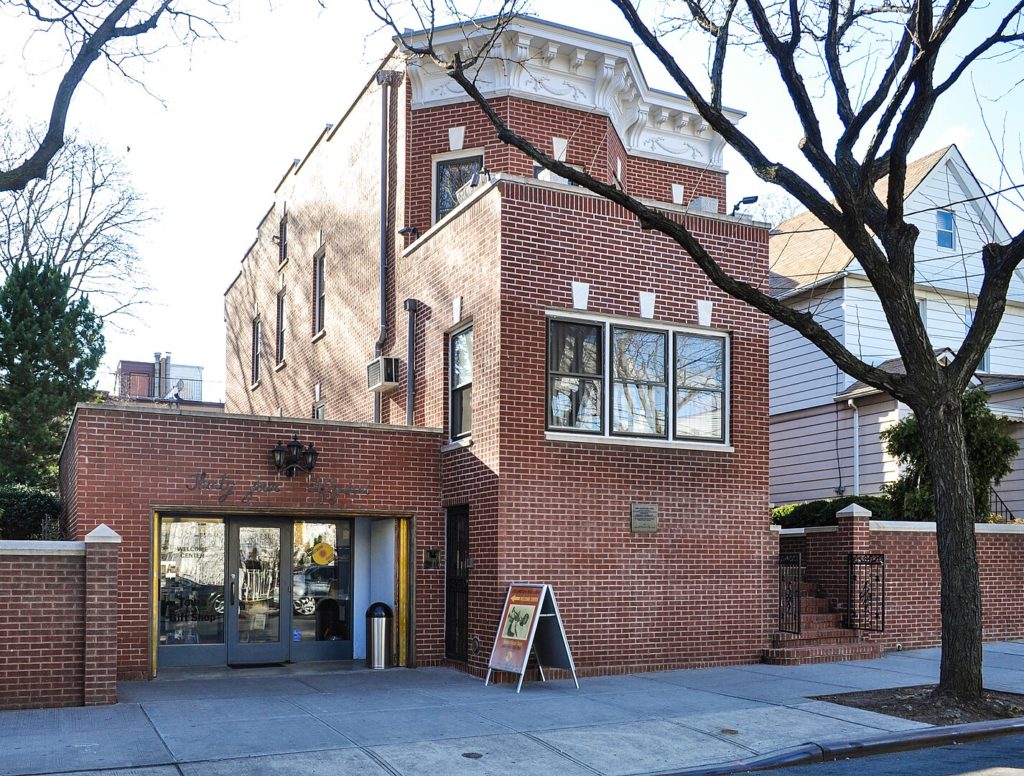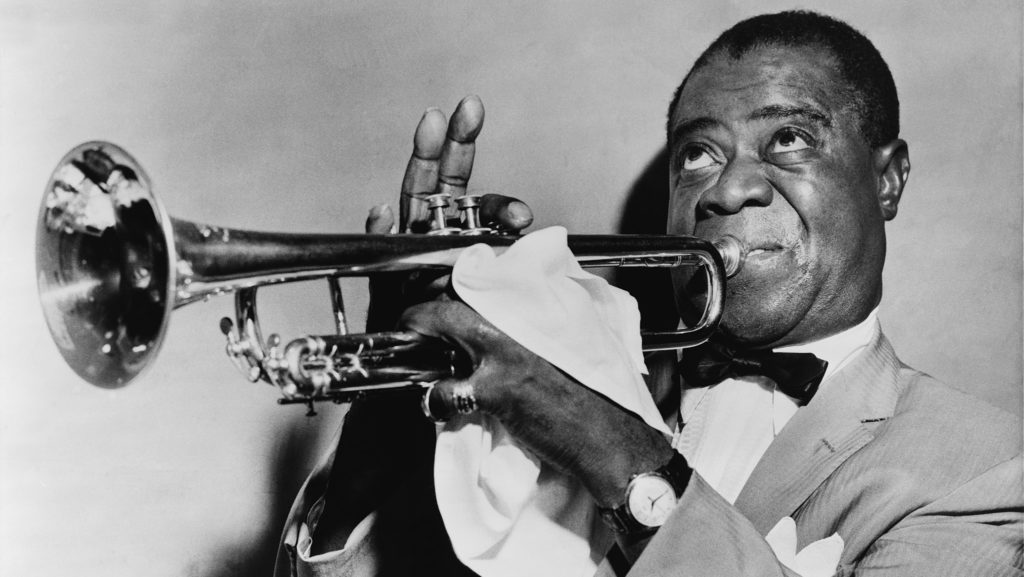Louis Armstrong (1901-1971), one of the world’s most well-known and well-loved musicians, gave up to 300 performances per year.
Over the course of his career, he reputedly played in every country except the Soviet Union and mainland China.
But when he wasn’t on the road, he lived from 1941 till his death on 107th Street in Queens, New York.
Today, you can make a pilgrimage to the Louis Armstrong House Museum, and learn more about this iconic figure who, with his trumpet, white handkerchief, and big laugh, came unofficially to be known as the Ambassador of Goodwill.
As the docent pointed out, the adventure begins in getting there. The neighborhood, a far cry from downtown Manhattan, is Catholic in flavor: in Louis’ day, mostly Italian and Irish; today, Latino.
The house, set above the road and reached by a steepish set of stairs, is modest, and inside a bit musty. The low-ceilinged living room features a beige shag rug, velour sofas, and shelves of the various tchotchkes Louis gathered, or was given, on his travels.
The bathroom, with its gold fixtures, chandelier, and mirrored walls, is a different matter altogether. Famously devoted to Swiss Kriss, a popular laxative during the ’50s and ’60s, Armstrong joked that he liked seeing himself from every angle.
The Jetsons-like kitchen is all aquamarine cabinets, with Lucite handles, rounded corners, and a dishwasher with both “Daily Use” and “Party” settings.
Upstairs, the master bedroom holds a huge custom-made bed, highlighted by silver lame wallpaper. Lucille’s prayer nook holds saint figurines and a print of the crucifixion by Salvador Dali.
The den is where Louis held court, practiced, taped his reflections and reminiscences, and curated his voluminous archives. Photos, letters, and press clippings were pasted into innumerable scrapbooks.
He designed more than 500 collage covers for the boxes in which he stored his tapes. Notes contemporary artist Lorna Simpson: “Armstrong archives and recontextualizes his public life by hand, to be layered and collaged on to the walls of his private life.”
After a while, Lucille wanted to move up, to buy a bigger, flashier place, but Louis — in spite of his international reputation and hefty income — dug in his heels. He loved the close-knit community, the melting pot of Queens, and especially the hordes of enthusiastic children who considered Satchmo one of their own.
British photographer Chris Barham took a series of iconic shots in June 1970. One of the most moving shows Armstrong sitting on the top step of the house, blowing his horn, while the street kids range along the railings, awestruck and grinning.
His first heart attack was in 1959. Louis kept it a secret, and kept touring. Eventually, he was forced because of failing health into retirement: he called it “intermission.” He came home to Queens for good but felt the walls closing in. “You take the horn out of my mouth, you’ll kill me,” he reportedly said.
Armstrong always claimed he was born on Independence Day, and in early July 1969, the neighbors threw a birthday party for him. So invigorating did he find the celebration that, in spite of his poor health, he called his agent to say he was ready to go back to work the next day.
He died in his sleep that night, on July 6, 1971.
In 1976, the house was named a National Historical Landmark.
Lucille Armstrong died in 1983. She generously willed the home and its contents to the city, and the house was declared a New York City Landmark in 1988.

Gathering and compiling the archives took years (and is ongoing). The doors to the House Museum opened to the public in 2003. The Louis Armstrong Educational Foundation (LAEF) works today as a force for jazz education.
Though the neighborhood is rough, the docent noted that the house has never been broken into, vandalized, nor defaced by graffiti. Satchmo’s goodwill lives on.
Across the street at the Louis Armstrong Center, where you can listen to recordings and watch slideshows of Louis’ background, the history of his career, and his interactions with fans.
You can see a photo of his 1968 meeting with Pope Paul VI at the Vatican, at which he presented the Vicar of Christ with a copy of his latest album.
In the gift store you can buy buttons, badges, bookmarks, pins, pens, tote bags, books, and a Louis Armstrong Red Beans and Rice Recipe Card.
“He was born poor, died rich, and never hurt anyone on the way,” eulogized Duke Ellington. He was universally loved, and remains forever an enigma. What made him tick? Where did the bedrock conviction of his greatness, formed as a child, the prodigious talent, the outsized charisma, spring from?
As author Gary Giddins notes in “Satchmo: The Genius of Louis Armstrong” (Da Capo, $19.99):
“Genius is the transfiguring agent. Nothing else can explain Louis Armstrong’s ascendancy. He had no formal training, yet he alchemized the cabaret music of an outcast minority into an art that has expanded in ever-widening orbits for seventy-five years with no sign of collapse. He played trumpet against the rules, and so new rules were written to acknowledge his standards. His voice was so harsh and grating that even black bandleaders were at first loath to let him use it, yet he became one of the most beloved and influential singers of all time.”
He was like a meteor, a specimen of resplendent humanity blazing across the cosmos.
“Heaven will have to wait for Old Louis,” he taped to the back of one of his collaged tape boxes.
And his 1927 recording of “Melancholy Blues” is on the Voyager Golden Record, a time capsule sent into space by NASA.

